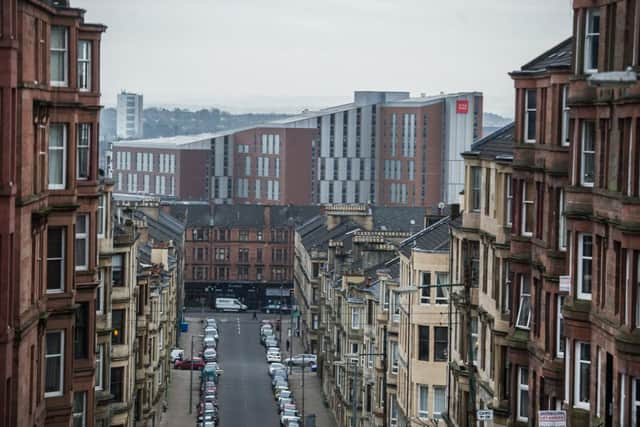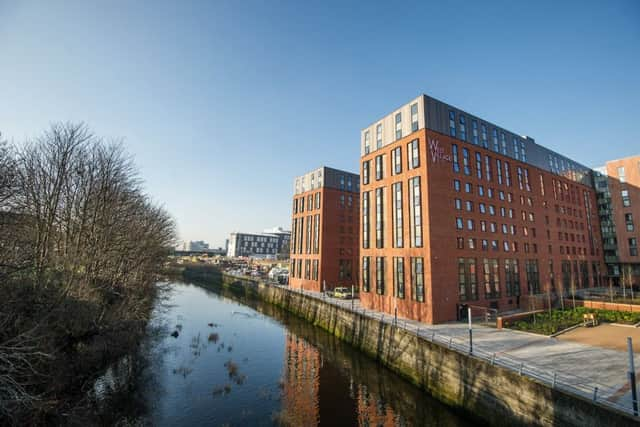Growing number of student flats raises eyebrows in Glasgow


Given its sheer size, it could be mistaken for a hospital or a local authority headquarters, but the block is what private developers describe as the “next generation” of student accommodation. When it fully opens later this year, Vita will offer 500 studio flats.
The development in Partick – a short walk from the University of Glasgow – is one of several that have sprung up along the River Kelvin since 2010, built on land once variously used by flour mills, railway sidings and scrap yards.
Advertisement
Hide AdAdvertisement
Hide AdThere have been around 30 student developments built or under construction in Glasgow over the past five years, with around 9,000 bed spaces in total.


They are part of a growing trend in Scotland’s university cities as property developers look to capitalise on growing student numbers.
The number of full-time students in Glasgow rose from 42,000 in 2001 to 62,000 a decade later, while the number in Edinburgh rose by more than a quarter in the same period and reached 44,898 by 2014.
A recent report by property adviser Cushman & Wakefield revealed Glasgow now has 14,528 purpose- built student accommodation beds – up 15 per cent on the year before.
But such developments are not without controversy.


Complaints over their size or location have grown increasingly vocal. Sandra White, SNP MSP for Glasgow Kelvin, has called for a moratorium on purpose-built student accommodation in the city, and chaired a well-attended public meeting on the issue on Monday evening.
“Constituents have approached me with concerns about the proliferation of private student housing and the impact it will have on the area,” she told The Scotsman.
“But I’ve also had students complain these types of developments are far too expensive for many of those attending university in the city.”
So why the sudden increase in developments?
“Student housing is a relatively quick way of transforming your pounds and dollars into bricks and mortar which can generate a guaranteed return over the longer term,” said John Glenday, editor of architectural magazine Urban Realm.
Advertisement
Hide AdAdvertisement
Hide Ad“We’ve seen investors from across Europe and as far away as China enter this market.
“I think it’s systematic of the internationalisation of our further education system. There’s a greater diversity of students from around the world. British universities have recognisable names and parents are keen for their children to attend.
“In some ways the rise has been good – it’s offered a lifeline to the construction industry when other sectors are struggling.
“But one of the downsides is these developments are only suitable as student lets. If the market turns, and there’s a decline in student numbers, what becomes of them? There is a risk they could become white elephants.”
Both Edinburgh and Glasgow city councils stress the economic benefit that students bring.
“We take the view that student numbers in the city are sustainable, indeed a high number of students in Glasgow is desirable as they provide the skilled workforce which will bring our future economic success,” said a council spokesman.
Councillor Ian Perry, Edinburgh’s planning convener, said the council was aware a high incidence of any one type of development – including student accommodation – in one place could affect the balance of uses and the aim of having mixed, sustainable communities.